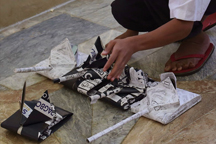- News Front Page
- Uncategorized
- Headline News
- Filipino Calgarian
- Business
- Pinoy Stories
- Community News
- Publisher's Note
- The Main Ingredient
- Views and Opinions
- Maikling Kwento
- Alberta News
- OFW – Month
- Travel News
- Health and Lifestyle
- Pinoy Toons
- Pinoy Spirit
- Entertainment
- The Philippine Lawyer
- Horoscope
- Greetings
- About Us
- Greetings From the Prime Minister
- Greetings from the President of the Philippines
- Greetings from the Premier of Alberta
- Greetings from the Mayor of Calgary
- Advertise With Us
- Disclaimer
- Subscription
Publisher's Note
- Publisher’s Note
 It was 22 years ago when I arrived in Canada and chose Calgary, Alberta to be my home. Leaving my family and friends behind, it was a new adventure for me to be in a new country without knowing anyone. That was the time I looked for a Filipino community paper and never found any, [...]
It was 22 years ago when I arrived in Canada and chose Calgary, Alberta to be my home. Leaving my family and friends behind, it was a new adventure for me to be in a new country without knowing anyone. That was the time I looked for a Filipino community paper and never found any, [...]
Visitors to Pinoytimes
Page added on June 25, 2017
In fight for Marawi City, a painful window on war

MARAWI, Philippines — From the third-story window of a barren government office building he now squats in as a refugee, Nasir Abdul is watching his city being destroyed.
Nearly every day for the past three weeks, the Philippine military has pounded the lakeside town of Marawi with rockets and bombs as it tries to wipe out militants linked to the Islamic State group in some of the fiercest urban combat this volatile region has seen in decades.
And on nearly every one of those days, Abdul has stood at the window and watched, unable to turn away from the deadly spectacle unfolding just a mile (a kilometer and a half) away.
As plumes of thick black smoke wafted above the city’s minarets again Friday — a day of intense skirmishes in which the army lost 13 marines — Abdul stood transfixed with dozens of other displaced residents. Two helicopter gunships had just finished strafing the city, and now people were pointing toward a Vietnam-era attack aircraft circling overhead.
The plane, an OV-10 Bronco, turned and dove straight down on the city center, firing off two bombs before suddenly pulling up its nose and spiraling away. Moments later, blasts shook the city and more smoke billowed skyward.
“It feels impossible that this is happening,” the 45-year-old Abdul said, as the sound of gunfire crackled in the distance. When “I see the bombings, I can’t help but cry. I can’t help but think what’s happening to my relatives, my family, my business, my house.”
Three weeks after a new alliance of Islamic militants tried to seize this town in their boldest attack yet, large chunks of downtown have been reduced to ruins. Militants remain holed up in several pockets scattered around the city center, along with at least 100 civilians, including hostages the army says are being used as human shields. There is no electricity, and most of the town’s 200,000 inhabitants have fled.
The military says the death toll includes at least 138 militants, 58 government troops and 29 civilians — among them a teenager shot Friday as he sheltered inside a Marawi mosque.
But the fighting is so intense, it’s impossible to fully recover bodies to get an accurate casualty toll.
“It hurts to watch because we know people are dying with every bomb,” Abdul said. “We know a lot of people are buried under that rubble.”
The conflict in Marawi has raised fears that the Islamic State group’s violent ideology is gaining a foothold in this country’s restive southern islands, where Muslim separatists have fought for greater autonomy for decades.
The military says militants are trying to establish a caliphate here, similar to one IS has attempted to create in the Middle East that stretches from the Syrian city of Raqqa to embattled Mosul, in Iraq. They believe 40 foreign fighters have participated in the fighting in Marawi, including Malaysians and Indonesians.
The government has asked the U.S. to provide intelligence and other technical support, and at least one American surveillance plane has flown in support of Philippine forces.
Abdul said that while people in Marawi support autonomy, few back the extremist militant groups who have grown notorious for carrying out kidnappings and beheadings.
However, Lt. Col. Jo-ar Herrera, spokesman for the army’s 1st Infantry Division, said the insurgents likely have “a lot of sympathizers, a lot of supporters in this area.”
The main group leading the siege, the Maute, has deep roots in the city — “in terms of relatives, in terms of connections, in terms of culture, heritage,” he said.
The Maute, named after three militant brothers, staged a similar attack in November on nearby Butig, on the opposite side of Lake Lanao, which lasted six days. But the intensity of the latest assault, and the ability of the militants to hold out for so long, appears to have caught the government off guard. Herrera said insurgents had prepared for as much as a year, stocking secret caches in basements with food, weapons and ammunition.
Rexson Tamano, who is sleeping on the floor of an outdoor hallway in the same provincial government building as Abdul, said he saw no suspicious activity and no sign an attack was imminent.
When gunfire heralded the start of the siege on May 23, he called his pregnant wife on the other side of town to check in on her and their four children.
“She said, ‘Stay where you are, please don’t come for us, it’s too dangerous,’” Tamano recalled. He ran home anyway, but was stopped at a checkpoint manned by militants. They wore black ski masks, and each held a machine-gun.
“I tried to walk away but they called me over and asked whether I was Muslim or Christian,” Tamano said. He told them the truth — he was Muslim, and they waved him through.
The city’s minority Christians have been singled out for execution.
Mikee Rakim, a humanitarian volunteer, said one group of 10 Christians told him they had been taken hostage when the fighting started. Militants beheaded two of them and were preparing to kill the rest when an airstrike hit a neighboring house, enabling them to escape.
While most of the displaced have sheltered inland, Abdul and Tamano are among about 200 people who have chosen to remain close to the city, anxious to return when the fighting ends to homes they fear were either looted or destroyed.
The government has distributed food, water and sleeping mats to the families camped out here, who gather in small groups at the windows every time the fighting intensifies.
While explosions shook Marawi on Friday and fighter jets buzzed overhead, one boy pushed a baby on a stroller through a hallway. In a corner, several other children sat making toy tanks out of paper.
“ISIS! ISIS!” cried one boy, laughing as he pointed to a tiny black flag on one of the tanks.
Fahadda Camim, who was conducting an assessment for Community Family Services International, a Filipino humanitarian organization, said the children were “copying what they see outside” and were in need of counseling.
The adults, too, are traumatized, she said, and “some are still very afraid.” The clashes are a constant reminder that their lives have been upended, and their fates remain uncertain.
Abdul said he did not want to watch the fighting. But he could not resist, either. “It’s our city,” he said. “It’s so painful. It’s impossible to turn away.”
source:philstar.com
RELATED STORIES
LATEST HEADLINES
- ISKWELAHANG PILIPINO (IP) RONDALLA OF BOSTON WINS THE HEARTS OF CALGARIANS
- Pinay doctor joins Medicus Family Clinic and Pharmacy
- Multicultural Ethnic Media round table with Minister of Finance Joe Ceci together with Minister of Social Services Irfan Sabir
- Trans Mountain Pipeline keeps Canada working
- Facilitating travel to Canada while keeping Canadians safe
COMMUNITY NEWS
 A new way forward for some immigration application processing times
A new way forward for some immigration application processing times Calgary Stampede 2018 Poster
Calgary Stampede 2018 Poster Alberta celebrates first Philippine Heritage Month
Alberta celebrates first Philippine Heritage Month UPAAA Welcomes New Philippine Consul General
UPAAA Welcomes New Philippine Consul GeneralPINOY STORIES
 Duterte signs National ID System Act
Duterte signs National ID System Act- Holy Week practices in the Philippines
PINOY SPIRIT
HAVE YOUR SAY
Lorem ipsum dolor sit amet, consectetur adipiscing elit, dolor sit ipsum.PROMOTIONAL BLOCK
Lorem ipsum dolor sit amet, consectetur adipiscing elit, dolor sit ipsum.TRAVEL NEWS
PINOY TOONS
Tags
Archives

















